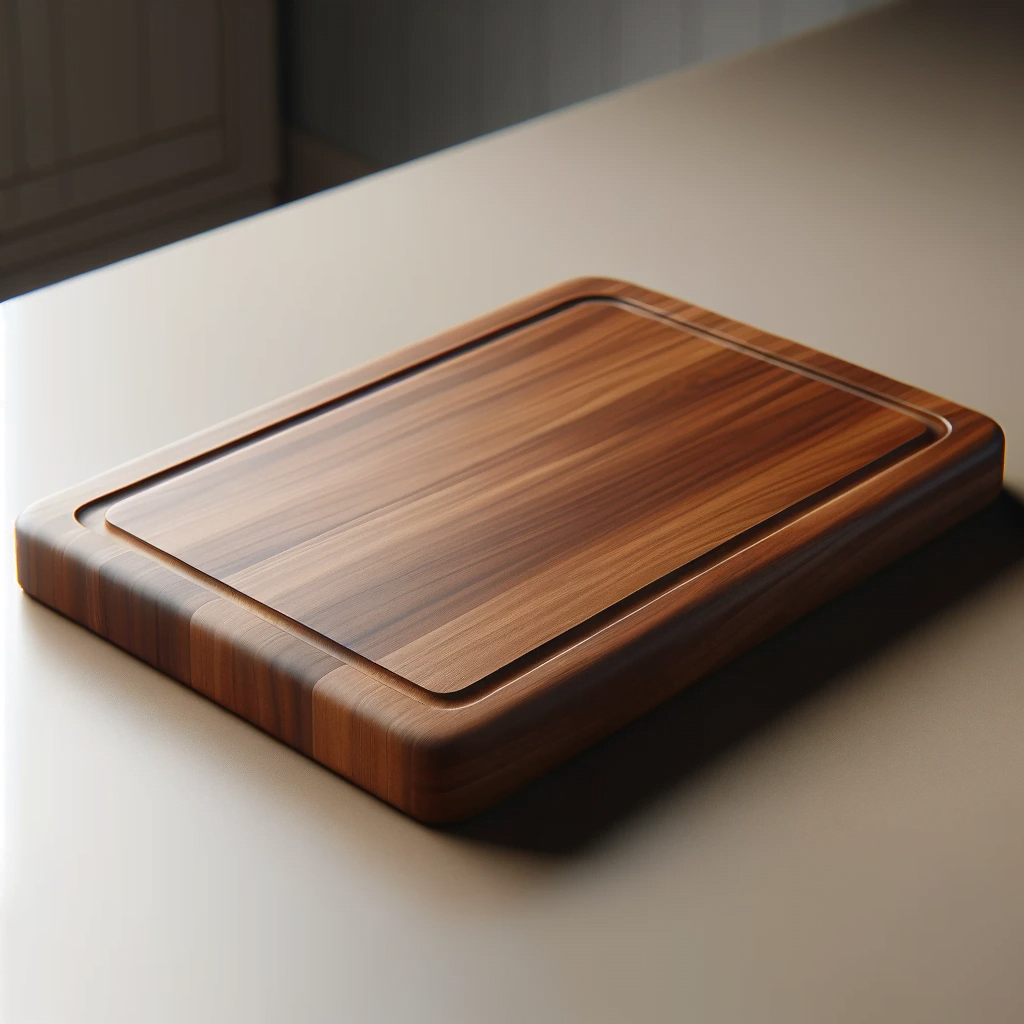
Introduction
A wooden cutting board is not just a tool but a culinary companion. In the journey of home cooking, a quality cutting board stands as a silent yet indispensable ally. Not all wooden cutting boards are created equal. If you search on Amazon, you’ll find over 3000 results for “wooden cutting board” ranging in price from $4 to over $500. There is a huge difference is quality and appearance with wooden cutting boards, so picking the right one can be quite a challenge! This guide delves into the nuances of selecting the perfect wooden cutting board, a piece that’s both functional and an extension of your culinary artistry.
The Significance of Wooden Cutting Boards in the Kitchen
Wooden cutting boards have been a mainstay in kitchens for centuries. Unlike plastic or glass boards, wood provides a softer surface that’s kinder to knives, reducing dullness over time. The natural antibacterial properties of wood also add a layer of hygiene. But not all wooden boards are created equal. The type of wood, grain orientation, thickness, and maintenance are pivotal factors that can elevate your cooking experience.
Understanding Wood Types and Grain Orientations
Types of Wood
- Maple: A popular choice for its durability and resistance to bacteria.
- Walnut: Softer than maple, walnut is gentle on knives and boasts a rich color.
- Cherry: Known for its beautiful, reddish hue and medium hardness.
- Teak: High in natural oils, teak is resilient against moisture and warping.
- Bamboo: Technically a grass, bamboo is an eco-friendly and tough option.
Grain Orientations
- End Grain: Made from end pieces of wood, this type creates a checkerboard pattern. It’s gentle on knives and self-healing, meaning shallow cuts tend to close up over time.
- Edge Grain: A more cost-effective option, edge grain boards are made from parallel pieces of wood. They are durable but slightly tougher on knives.
- Face Grain: These boards show the wood’s face grain. While aesthetically pleasing, they are more prone to scratches and knife marks.
Key Factors to Consider When Choosing a Wooden Cutting Board
- Size and Thickness: Consider the space in your kitchen and the type of food you usually prepare. A thick board is more stable but heavier.
- Maintenance: Wooden boards require oiling and occasional sanding. Opt for a board that suits your willingness to maintain it.
- Hygiene: Look for woods with natural antibacterial properties.
- Sustainability: Choose brands that source wood responsibly and sustainably.
- Cost: Price can vary greatly. Decide on a budget that reflects your usage and appreciation of the board.
How to Maintain Your Wooden Cutting Board
Proper maintenance is crucial for longevity. Regular oiling with food-grade mineral oil keeps the wood conditioned. Never soak wooden boards in water or clean them in a dishwasher. Clean with mild soap and water, and dry thoroughly. Occasionally, use a paste of baking soda and water for deep cleaning. For more care instructions, make sure to check out these guides:
- Ultimate Guide to Caring for Your Wooden Cutting Board.
- How to Clean a Wooden Cutting Board.
- How to Oil a Wooden Cutting Board.
Complementing Your Cutting Board with the Right Tools
A great cutting board deserves great tools. Pair it with high-quality knives and consider other accessories like board cream or a board rack for storage. Check out our selection of essential kitchen knives.
Conclusion
Selecting the perfect wooden cutting board is a blend of understanding materials, considering personal needs, and committing to proper care. It’s more than a surface; it’s a testament to the love and care put into every meal.




Leave a Reply